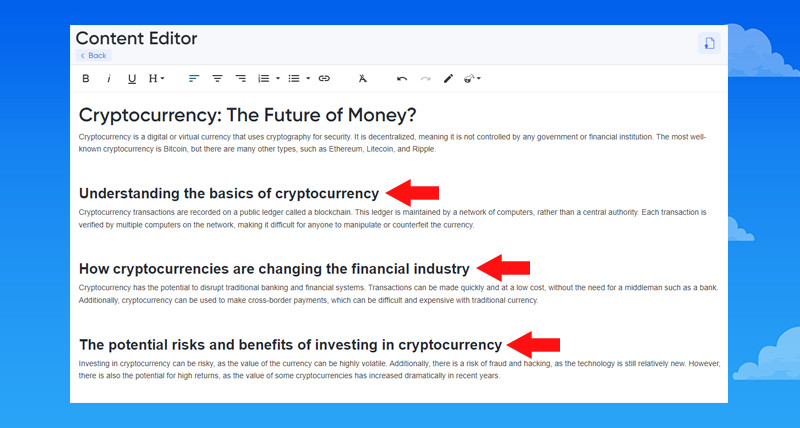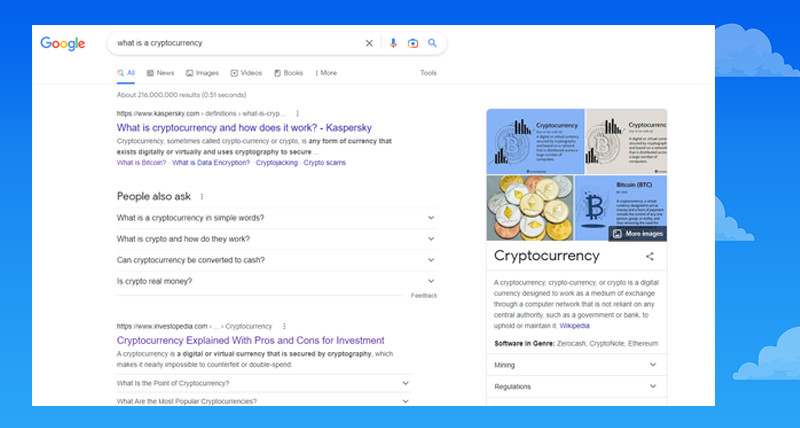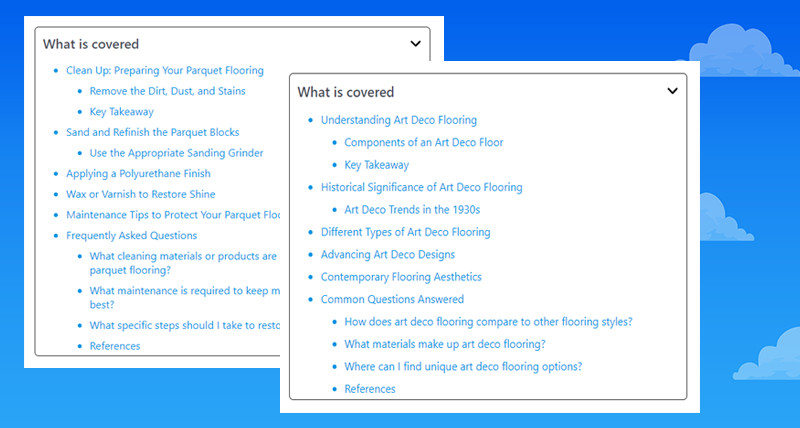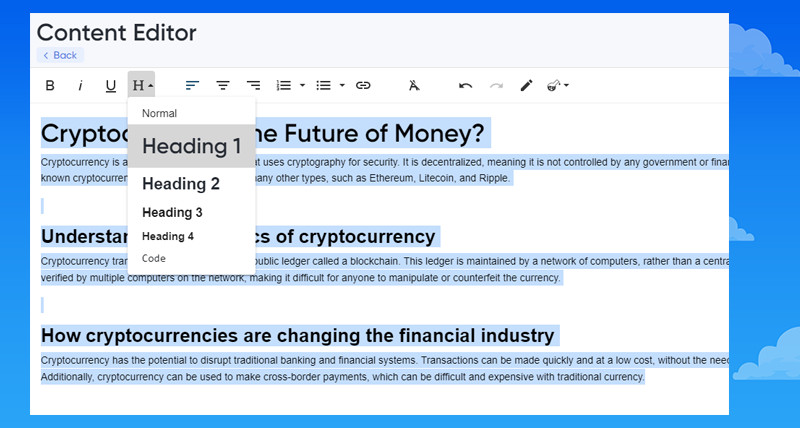Unlocking the Power of Sub-Headlines for SEO
What You Need to Know
Ready to give your SEO the jolt it needs to climb to the top of the search engine rankings? Unlocking the power of subheadings has proven to be one of the most successful tactics when it comes to gaining visibility online and increasing sales.
From structuring your content to optimizing it for SEO, subheadings are an integral element of any successful online marketing strategy. By taking full advantage of this powerful resource, you can help your content stand out on the SERPs and give your overall SEO efforts a major boost!
In this blog post, you’ll learn everything you need to know about using subheadings for SEO to get your content in front of the right people. From diving into the SEO basics to covering advanced SEO tactics, we’ll go in-depth into all the ways that subheadings can improve your website’s visibility. So, let’s get started!
Quick Recap of Key Points
Sub-headlines are important for SEO because they increase your page’s relevancy to search queries, allowing more users to find it. Sub-headlines also help to break up and structure content better, improving user experience on your website or blog.
What are Sub-Headings?
Sub-headings are used to break down the content of an article into smaller, more digestible sections. They help readers quickly find and identify the information they’re looking for in the page. Sub-headings are also important for search engine optimization (SEO). This is because they allow web crawlers to better index and categorize your page based on the topics that are being discussed in each heading.
When it comes to sub-headings, there’s no one-size-fits-all approach. It all depends on what type of content you want to create. Too many headings can lead to a cluttered and disorganized page, while too few can make it difficult for readers to skim through your content. Some SEO experts recommend using H1, H2, and H3 headings for optimal SEO benefits, while others suggest using only H2s or even limiting yourself to one or two per piece of content.
The challenge when selecting sub-headings is finding a balance between SEO and usability. If you focus too heavily on SEO, you may end up with bland headlines that don’t appeal to your audience. On the other hand, if you focus too much on usability and creativity, you might miss out on valuable SEO opportunities that could boost your search engine rankings. This is a crucial element for good content.

Since sub-headings play such an important role in both SEO and usability, it’s essential to understand why they are so important in SEO before jumping into how they can be used effectively. This leads us into our next section which explains why it’s important to use sub-headings in a website’s SEO strategy.
Why is it Important to Use Sub-Headings in SEO?
Sub-headings are an important part of SEO (Search Engine Optimization) because they make website content look more organized and relevant to search engine crawlers. Sub-headings can also help structure the content on a website, making it easier for readers to find what they’re looking for quickly and efficiently.
Using sub-headings in SEO can be beneficial because it allows users to scan the page and identify which content is most relevant to their needs. This helps keep visitors on your website and encourages them to explore further. Furthermore, sub-headings are essential for improving search engine rankings. By breaking up content into topics under these optimized titles and keywords, search engines can determine which topics are most related to searcher queries. This can help boost a website’s ranking, as well as overall visibility.
On the other hand, there are some potential negative effects associated with sub-headings in SEO. If done incorrectly, excess use of keywords in wrong places or within descriptions that don’t accurately match the content could lead to penalties from search engines due to keyword stuffing or other black hat tactics. With this in mind, it is important to ensure that sub-headings are used with caution and only contain accurate information.
Overall, sub-headings play an important role in SEO by helping organize and optimize website content. With careful implementation, they can provide valuable benefits such as improved user experience and better organic rankings.
Moving forward, this article will focus on how using sub-headlines in SEO can increase visibility on search engine results pages (SERPs).
Increases Visibility on Search Engines
When it comes to SEO, sub-headlines can help boost visibility on search engines. Using subheadings gives search engine crawlers more structure when they crawl through the page and gives them indicators as to what topics should be more relevant to search engine queries. This is especially important because many websites are filled with mountains of content that can make it difficult for crawlers to understand what is truly important on a page. By breaking up content into easily digestible pieces with headlines, you can maximize your visibility on search engines.
Not only will this help your website rank higher in searches, but properly constructed subheadings will also create a better experience for readers. Search algorithms today prioritize user experience and that means presenting content in an easy to read way. If a reader has difficulty making sense of your content due to a lack of headlines and structure, then chances are the search engine won’t view your website favorably either.
It is important to note however that there is a fine line between effective headline structuring and keyword stuffing. In targeting keywords to capture attention from search engines, some website owners may be tempted to over-use keywords or manipulate headlines by creating overly long phrases or repeating the same words multiple times. These practices may attract Google’s attention briefly, but ultimately provide no tangible benefit and can even lead to penalties from search engines down the road.
Clearly defined sub-headlines are an effective way to increase visibility on search engines while still providing an enjoyable experience for readers. When done right, these headlines draw attention that helps websites climb the rankings and attract more visitors naturally.

Leading into the next section, this article will explore how using subheadings can help attract more readers who are looking for specific topics.
Attracts More Readers
Sub-headings are designed to draw readers in and make the content easier to read. But do they actually make a difference? The answer is yes. Many studies have shown that sub-headings can make a significant difference in website traffic and reader engagement.
When readers see large amounts of text in one block, they’re often put off and will move on without reading it. Sub-headlines break up the text into smaller, more digestible chunks, which makes it more likely that readers will be drawn into the article or webpage and continue reading.
In addition, well-crafted sub-headings give readers an idea of what the page contains before they begin reading. This lets them decide if the content is relevant to them or not. Including relevant keywords within these sub-headlines can also help search engine optimization efforts, making it more likely for your content to appear at the top of search engine results pages (SERPs).
Sub-headings also serve another purpose: They tell search engines what each page covers, essentially “hinting” which text should be ranked for what topics. This contributes to better search engine rankings if these sub-headings include specific keywords used by search engines in ranking algorithms.
Ultimately, using sub-headings can mean more website visits and higher SEO rankings—both critical elements of success in any business today.
This section has outlined how attractive sub-headings attract more readers and improve SEO efforts. The next section will explain the various benefits of using sub-headings in content marketing today.
Must-Know Points to Remember
Sub-headings are an efficient way to make content more attractive, easier to read, and draw readers in for better website traffic. They can also enhance search engine optimization efforts by including relevant keywords in the headlines and hinting which text should be ranked for certain topics for better search engine rankings. Ultimately, usingsub-headings can lead to increased website visits and higher SEO rankings, which is essential for content marketing today.
Benefits of Sub-Headings
Sub-headings can be incredibly beneficial for SEO, as they give searchers a quick insight into the content of your page. By providing a page summary through sub-headings, readers are more likely to stay on the page and engage with the content. Sub-headings also capture viewers attention and help to guide their experience browsing your article. Furthermore, by breaking up the text into shorter chunks, it enhances readability and allows readers to easily digest your information.
Sub-headings can also offer valuable keyword opportunities for search engine crawlers. Research suggests that pages containing sub-headings receive higher rankings than pages without sub-headings as crawlers are unable to efficiently assess blocks of text. Adding relevant keywords to your sub-headings allows crawlers to quickly understand the topic of your content and can improve your SERP (search engine result page) rankings.
On the other hand, some experts believe that overuse of sub-headings or using irrelevant topics or keywords within headings can harm user engagement with the content. This is because users may feel misled or confused if a heading is not representative of the actual content below it. In addition, poorly written or misleading headlines can lead to increased bounce rates.
Therefore, when it comes to unlocking the power of sub-headlines for SEO, it’s important to ensure headings are succinct and relevant to the actual content in order to maintain high levels of engagement with readers.
By leveraging sub-headings within webpages, organizations can improve both structure and organization on their site, making it easier for users to navigate around and quickly locate the relevant information they need. Let’s dive into this further in the next section about how implementing sub-headings can help to improve structure and organization on your website.
- A 2016 study found that websites with 4 or more headings improved their organic ranking by 6.85%.
- According to a 2017 research paper, content featuring more than one subheading resulted in higher rankings as compared to when there is only one heading.
- A 2018 study showed that 80% of expert SEOs believe that using keywords within subheadings can help improve a website’s search engine ranking.
Improves Structure and Organization
Sub-headings are a great way to improve the structure and organization of an article by breaking it into smaller sections that can be more easily digested. By properly utilizing sub-headings, readers can easily navigate through your content and gain a better understanding of the information presented. Sub-headings also help search engines index and rank your webpages more effectively.

Some argue that sub-headings do not necessarily improve the overall structure and organization of an article as well as other methods. While this may be true for some cases, it is still wise to consider the use of sub-headings for SEO purposes even if they are not needed for structural or organizational reasons. This is because sub-headings provide additional information to search engine crawlers which will in turn lead to higher rankings as long as they contain relevant keywords.
In addition to improving structure and organization, sub-headings can also provide a visual representation of the content through its hierarchy. This allows visitors to quickly identify what section of the page they are reading and how it relates to the rest of the article. Furthermore, sub-headings draw attention when used within electronic mediums such as emails or newsletters due to their larger fonts in comparison to body text.
It is clear that sub-headings have many benefits beyond just improving structure and organization; however, these reasons alone make them an important tool for effective communication on any webpage you create. To get started using them correctly, click into our next section which covers “How to Write Sub-Headings for SEO”.
How to Write Sub-Headings for SEO
Sub-headings are an important part of any website and online content. While it may be tempting to ignore this aspect of SEO, properly used sub-headings can be incredibly powerful for organic rankings. It’s essential to understand how to write effective sub-headings that serve the dual purpose of being both helpful for visitors and search engine optimization.
When writing sub-headings, whether you’re working in the H1 – H6 hierarchy or simply using headers that are formatted differently from other text, there’s one key question to consider: What would a visitor want to learn about? From there, create headlines that include key words related to your topic without forcing them into unnatural phrasing or over complicating the wording. Make sure you also use headline tags correctly — each page should typically have one H1 tag and then outliers with H2 and any other lower order tags as needed.

It is important to keep in mind that search engines prefer shorter titles than longer ones. That being said, while they should be kept relatively short, they should still convey important information accurately. Additionally, try to avoid duplicate sub-heading titles on different pages to reduce competition among similar stories on search result pages. There are some useful tools that can help you with your sub-headlines.
The overall goal when optimizing page titles should always move beyond keywords since true ranking success is achieved by telling great stories within each headline — but if balancing precise keywords is done properly, this approach leads to a successful outcome. So remember, create interesting titles that don’t overload viewers with too much information and keep in mind how you can leverage the content from the headline tags so that users don’t have to read too far into your story before getting their answer.
Now that you know more about unlocking the power of sub-headings for SEO, let’s look at the conclusion in our next section.
Conclusion
When it comes to SEO, having sub-headlines on your webpages can be a great way to improve search engine visibility. Sub-headings should be used whenever possible to strategically draw the visitor’s eye and provide additional insight into the content of the page. Not only do they make reading easier, but they also add a level of structure which makes it easier for search bots and readers alike to better identify the topic at hand.
However, it is essential to recognize that there has to be a balance between adding too many subheadings and not enough. The former risks making the article look disorganized, while the latter will hamper SEO efforts because search engines may infer that vital information is missing or duplicate. Therefore, subheadings should be used judiciously and with purpose in order to maximize their effectiveness.
Overall, using sub-headings as part of a comprehensive SEO strategy can help to maximize visibility and improve content engagement. Focus on creating meaningful headlines which succinctly answer questions and accurately summarize the content within a webpage – this technique doesn’t just improve SEO rankings; it also provides an improved user experience for readers as well.
Answers to Frequently Asked Questions
How can subheadings help improve my SEO?
Subheadings can be incredibly useful for SEO, as they help to break up content into smaller, more readable chunks. This aids search engine crawlers in understanding the content on a page more easily and quickly. Subheadings should also include keywords relevant to your content so that they are noticed by search engines. Additionally, having subheadings makes content easier to read and increases the reader’s engagement with the text, which can lead to increased user-retention. Search engine crawlers typically pay attention to how long people stay on a page; higher retention times correlate with better rankings. Finally, using adequate and appropriate subheadlines allow you to ensure your content is properly structured, making it easier for readers to scan and comprehend the text.
Are certain subheadings more effective for SEO than others?
Yes, certain subheadings can be more effective for SEO than others. It’s important to use subheadings that best describe the content of the article, as well as utilize keywords to help increase visibility on search engines. Keywords should be used sparingly and strategically, so they don’t appear spammy, while still closely relating to the main topic of the article. Additionally, longer headings are better for SEO since they contain more characters and information, allowing search engine bots to easily identify them and rank higher in search results. Finally, adding a combination of H2 and H3 tags within an article can also help with SEO since it offers additional clues for bots on what the content is about.
Are there any potential drawbacks to using subheadings in my SEO content?
Yes, there are potential drawbacks to using subheadings in SEO content. The most obvious is that your subheadings could potentially drown out the primary keywords you’re trying to focus on. If you’re focusing too much on adding subheadings and cramming them with keywords, you might end up overwhelming readers or making it difficult for search engines to properly index your page due to keyword stuffing. You should also keep in mind that the text in your subheadings is likely not going to get indexed by search engines like the rest of your page; so while they can add context and help boost SEO visibility, they won’t count as much as other parts of your content in terms of SEO ranking. Finally, don’t forget that subheadings are made to serve a purpose – to break up long sections of content. If used too often, they can make your page look cluttered and keep readers from absorbing what you’re trying to say.








